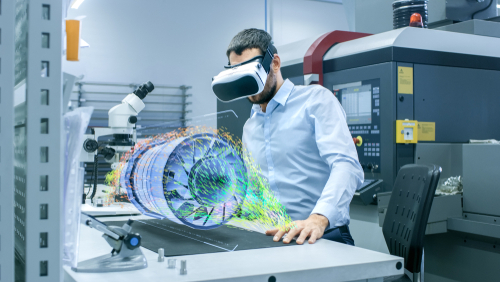Everyone Is Talking About the Future of Work. Here Are 4 Ways to Take Your Company Into the Future Now.
Studies suggest that the most valuable employees in the future will be those able to regularly and rapidly learn new skills.
Forty-seven percent of U.S. jobs are at risk of being automated within the next 20 years, according to researchers at Oxford University. Their studies suggest that the most valuable employees in the future will not be the ones with years of experience in a specific field; rather, they’ll be those who are able to regularly and rapidly learn new skills.
To support rapid learning in the workplace, businesses around the world will need to continue their current transition from analog to digital. A purely digital environment is already allowing for seamless connectivity across devices, data and workflows; and formerly mundane office objects are being revolutionized by smart technology.
Thanks to increasing internet speeds and computing power, smart tech is being integrated into the office in multiple ways. This application of technology is also generating virtually limitless data: Consider that 90 percent of all of today’s existing data was created in the past two years, according to the U.S. Chamber of Commerce.
Technologies such as cloud computing are also freeing us from physical hard drives and allowing us to tap into data wherever we are. And to make processing all that data easier, we’ve learned to rely on artificial intelligence and deep learning. By 2020, experts at Gartner foresee some form of AI being included in almost every available software.
As these changes become a reality, businesses will need to adapt quickly to stay afloat. In order to prepare for the future of work, business leaders must focus on the following strategies:
1. Keep up with the Joneses.
At the very least, you need to prioritize keeping up with the latest tech. Falling behind incurs significant productivity costs that add up over time.
Eighty-two percent of Asia Pacific business leaders in a Cognizant survey said they believed that the future of work would be found in intelligent machines. To support these machines and their processing power, businesses will need to build an IT infrastructure that can provide a solid foundation for AI technologies. And going from legacy systems to a highly sophisticated infrastructure will make things much more difficult.
2. Explore the bleeding edge.
Exploring the limits of technology is often a hefty investment, but adopting new tech and learning how to use it before the rest of the industry follows suit can provide businesses with an important competitive advantage.
For example, JPMorgan Chase is currently undergoing a digital transformation that emphasizes a wide range of bleeding-edge technologies, from blockchain to artificial intelligence to big data. Although it’s expensive, spending in these areas now will yield dividends in the future.
And, unless we invest in the future, we run the risk of falling victim to the type of disruption that has become almost inevitable in today’s business environment. After bringing existing technology up to speed, we must all look to the future to see what is available.
3. Cut the paper.
Paper creates clutter, and clutter costs money. The typical office uses around 10,000 pieces of copy paper each year, according to the U.S. Environmental Protection Agency. So, join the trend and do away with your reliance on paper, which only negates the benefits interconnected digital devices offer
Instead, invest in a document scanner that can digitally store all papers, documents and notes. Not only will this free up space and cut clutter in the office, but it can also give everyone access to important documents stored in the cloud, which can improve efficiency and productivity.
4. Go hands-free.
In my experience as a CEO, I can say that it would be difficult to overstate the impact of hands-free technology. It has given me much more freedom to multitask and get things done, and almost every industry can benefit from this technology.
Government studies that began after World War II revealed large productivity gains as we adopted new technologies, but these increases stagnated about a decade ago, and the average annual productivity increase has been cut in half, from 2.5 percent in 1948, to 1.2 percent in 2007. To once again realize significant productivity gains, we will need to turn to new ways of interacting with our technology. Start with intuitive technologies such as hands-free computing; then look to more outside-the-box solutions.
We are on the cusp of what has been called the Fourth Industrial Revolution — an explosion of new technologies that will fundamentally change the way we work and live. Adopting new technologies is not always a welcome proposition for business leaders, but whether we like it or not, these new developments will shape the future of our world. To avoid being left behind, we must embrace the future of work now.

